Grand Central Terminal stands as a remarkable architectural wonder at the heart of New York City. This iconic landmark pays homage to the artistry of architecture and the enduring essence of American train travel. Its immense indoor spaces and imposing exterior along Park Avenue make it a visible spectacle from almost a mile’s distance.
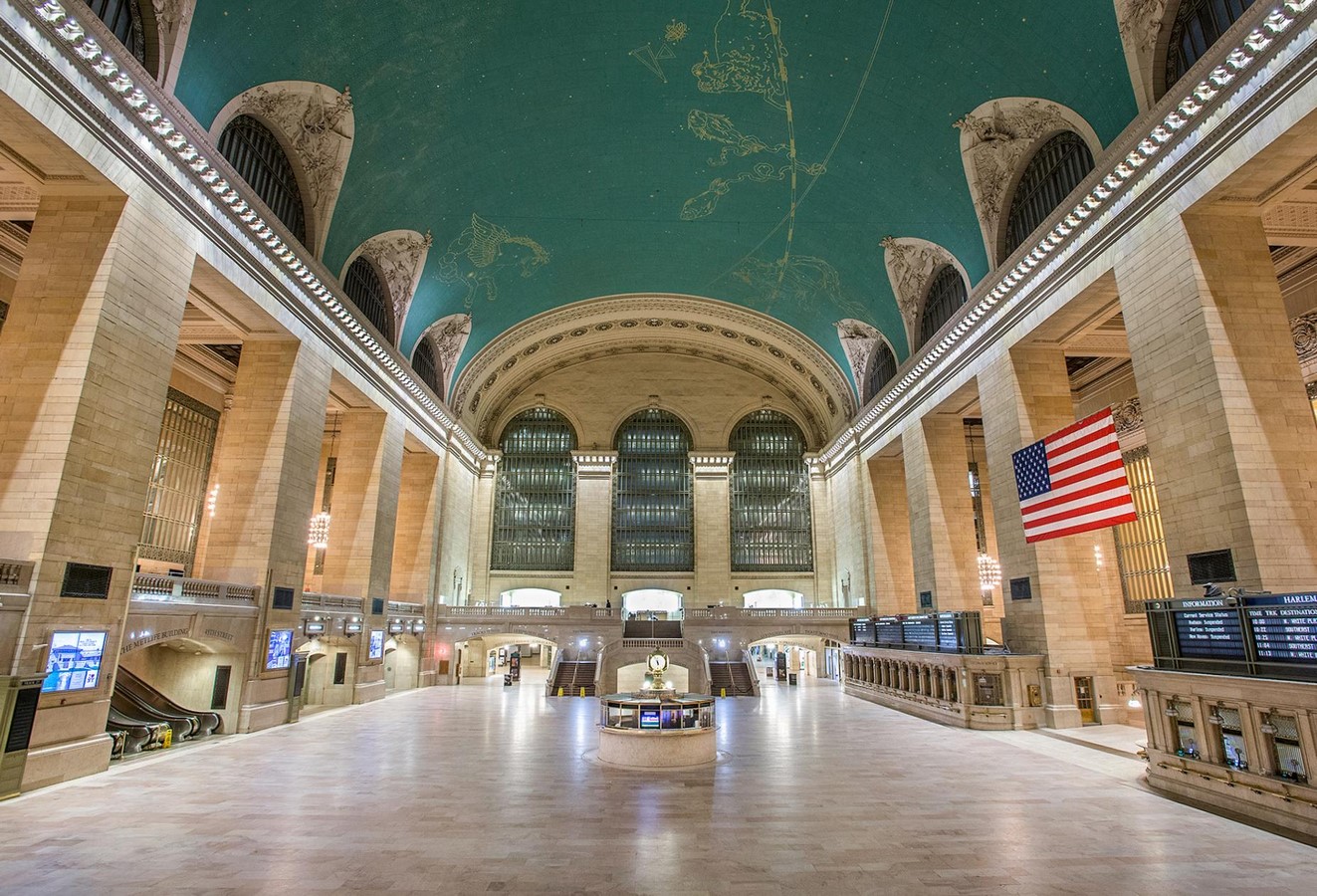
Historical Background
The expansion of New York City and the advancement of transportation are both entwined in the lengthy history of Grand Central Terminal. It was first constructed in 1871 as Grand Central Depot, and various railways used it as a hub for transportation.
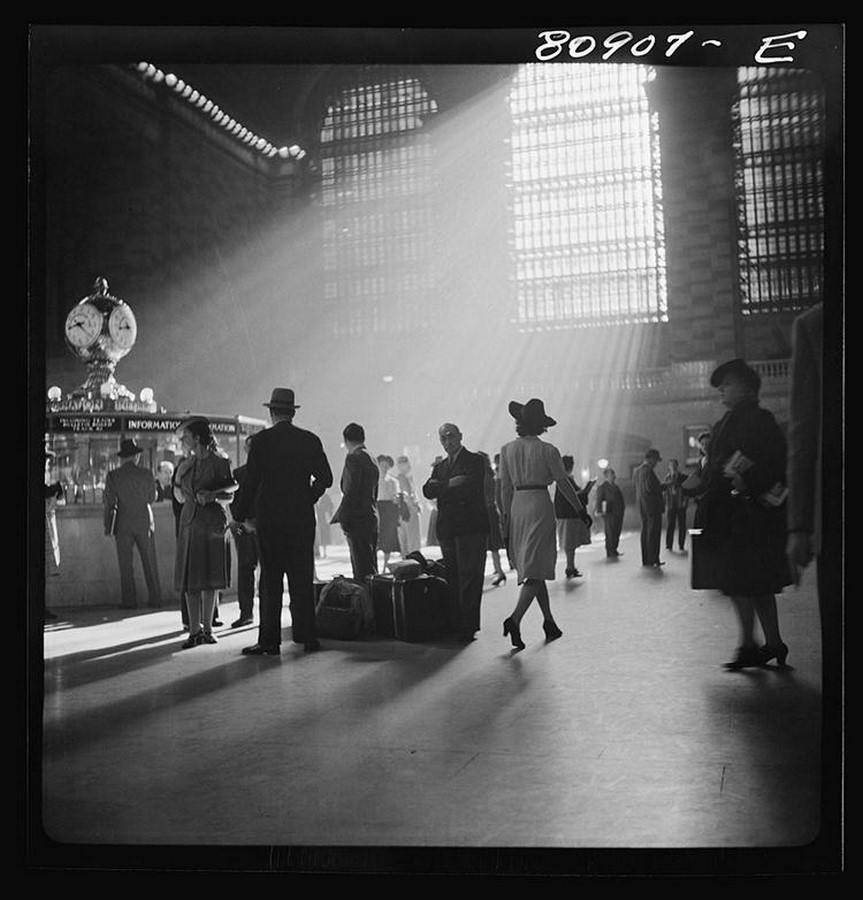
However, the current Beaux-Arts masterpiece we know today was not constructed until 1913.
The ambitious expansion and renovation, led by architects Warren & Wetmore and Reed & Stem, transformed Grand Central Terminal into the architectural gem that continues to captivate visitors. The terminal was strategically situated to mark the endpoint of grand boulevards, mirroring the Beaux-Arts style’s emphasis on careful urban planning.
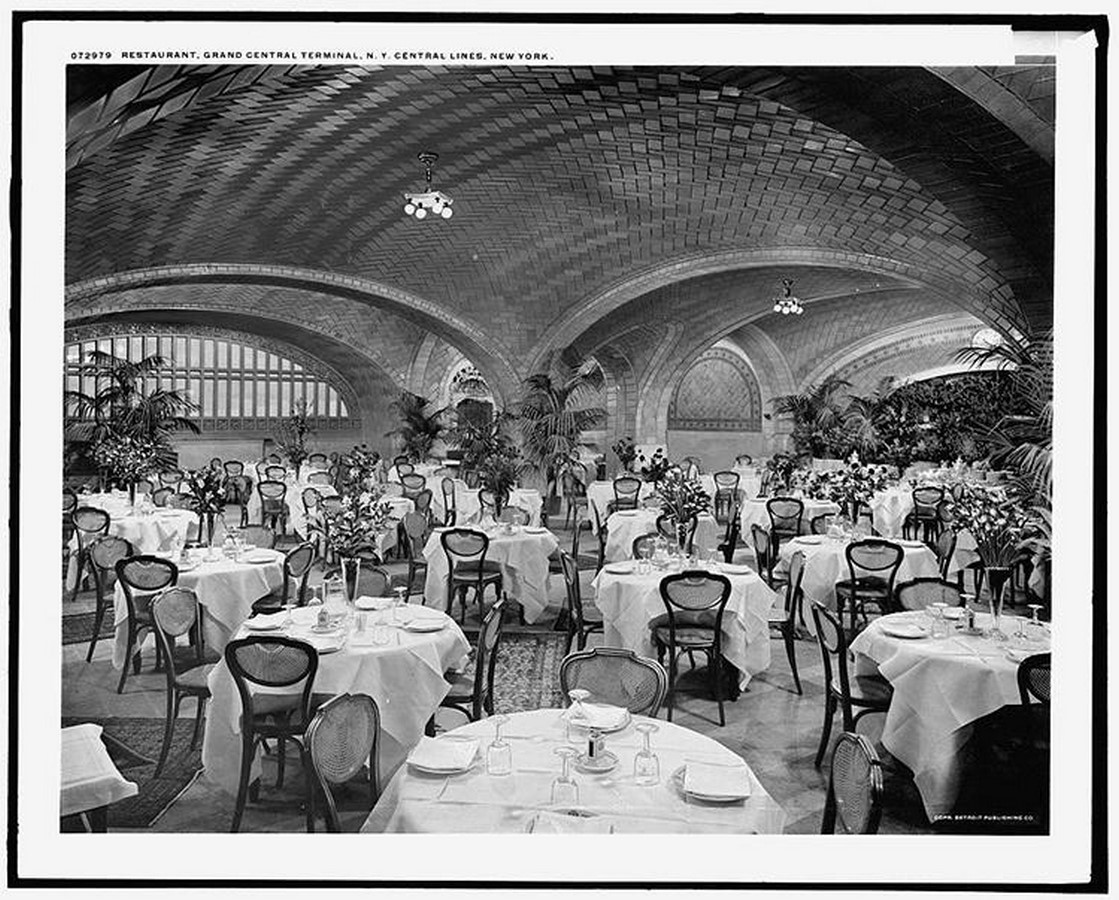
Beaux-Arts Influence on Design
The Beaux-Arts architectural style, characterized by grandeur, classical elements, and meticulous planning, greatly influenced Grand Central Terminal’s design. This style emphasized spatial organization, symmetry, and monumental detailing.
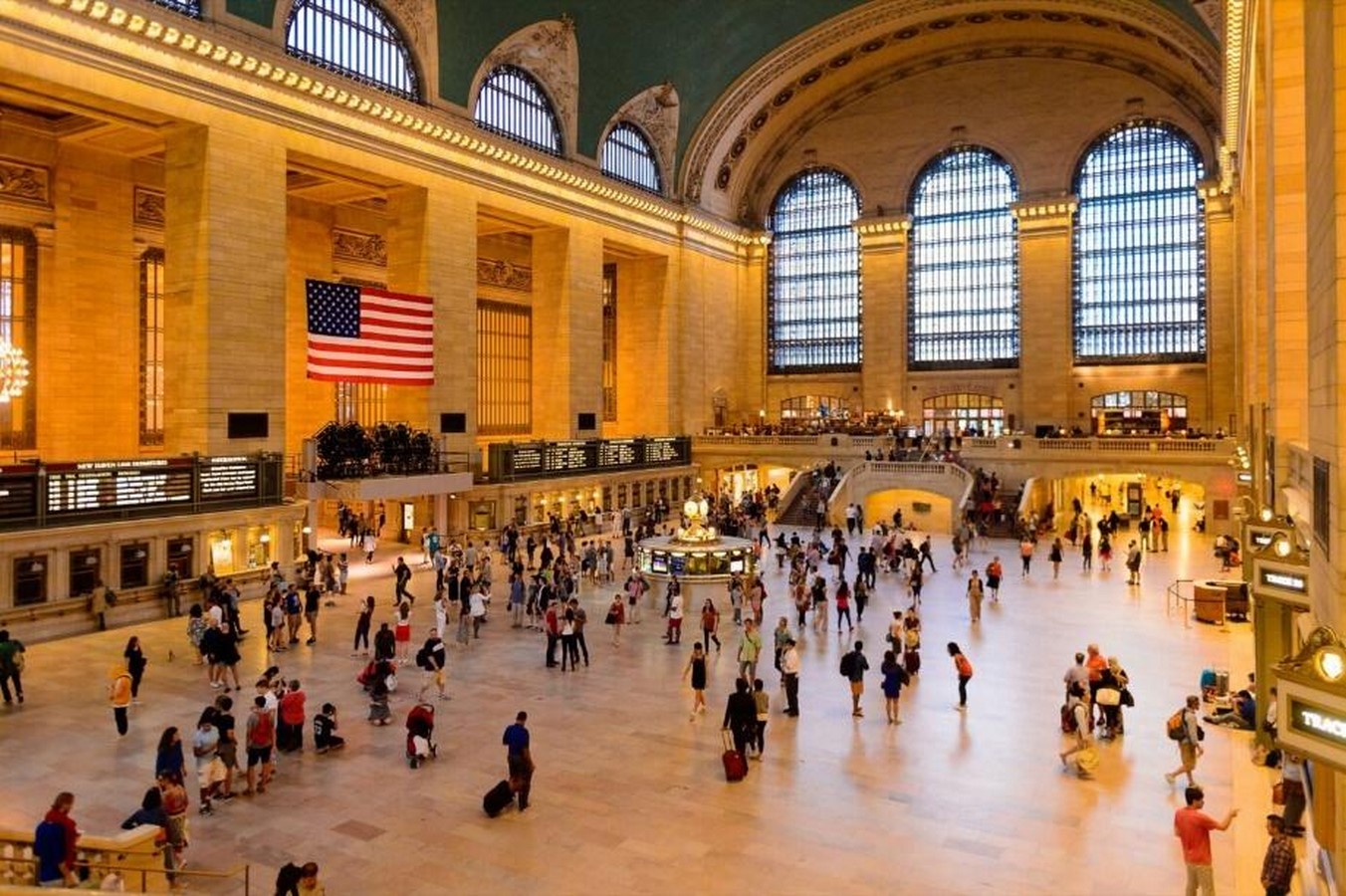
Symmetry and Spatial Organization
Central to the Beaux-Arts philosophy is the thoughtful organization of space. Grand Central Terminal’s interiors are a testament to this approach, with axially aligned major spaces such as the Waiting Room and Concourses connected by passageways and ramps. These ramps, designed for easy progression and transition, enhance circulation and contribute to the terminal’s functionality.
The plan of Grand Central also facilitates ease of entry and exit, making it a hub of efficient transportation. This forward-thinking design received acclaim from architectural historian Carroll Meeks, who hailed it as “a brilliant design.”
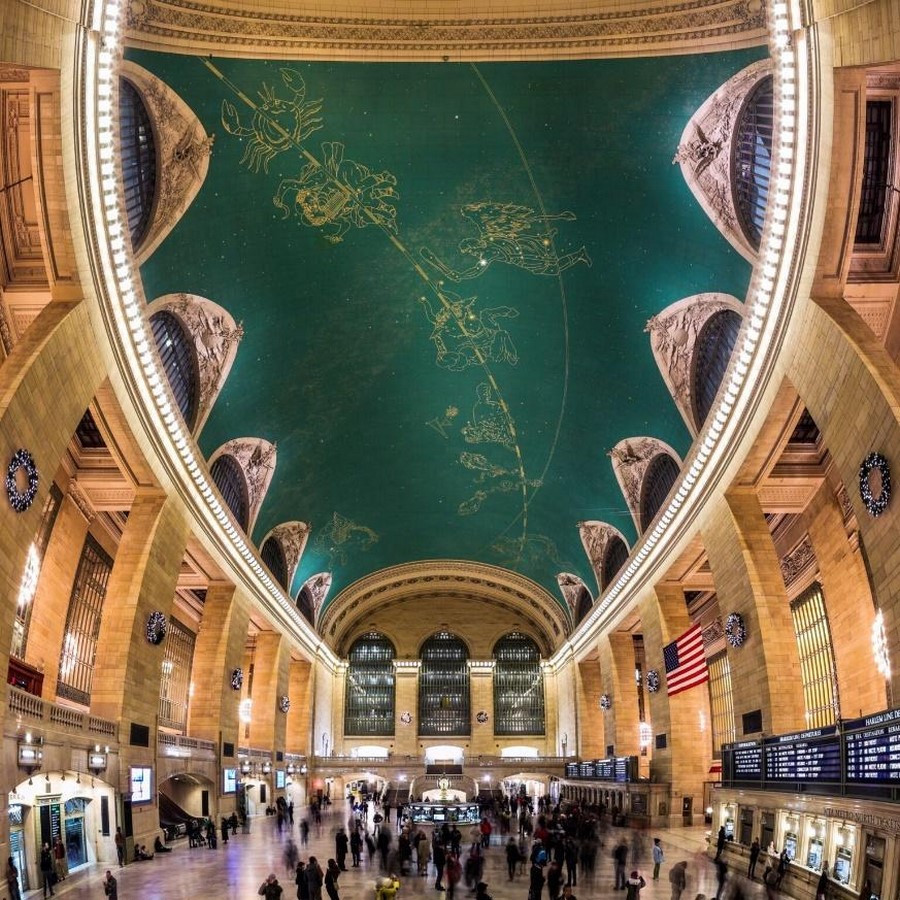
The Waiting Room
The Waiting Room, a highlight of Grand Central Terminal, epitomizes this grandeur. Spanning a vast 65 feet by 205 feet, it is divided into five monumental bays, adorned with enormous windows and splendid chandeliers. Its walls feature simulated Caen stone, a testament to the craftsmen’s skill and attention to detail.
Bronze grilles and ornate marble doorways beneath the windows add to the room’s opulence. The room’s ceiling, painted to resemble bronze, is lavishly enframed with foliate console brackets and classical mouldings, creating an awe-inspiring atmosphere.
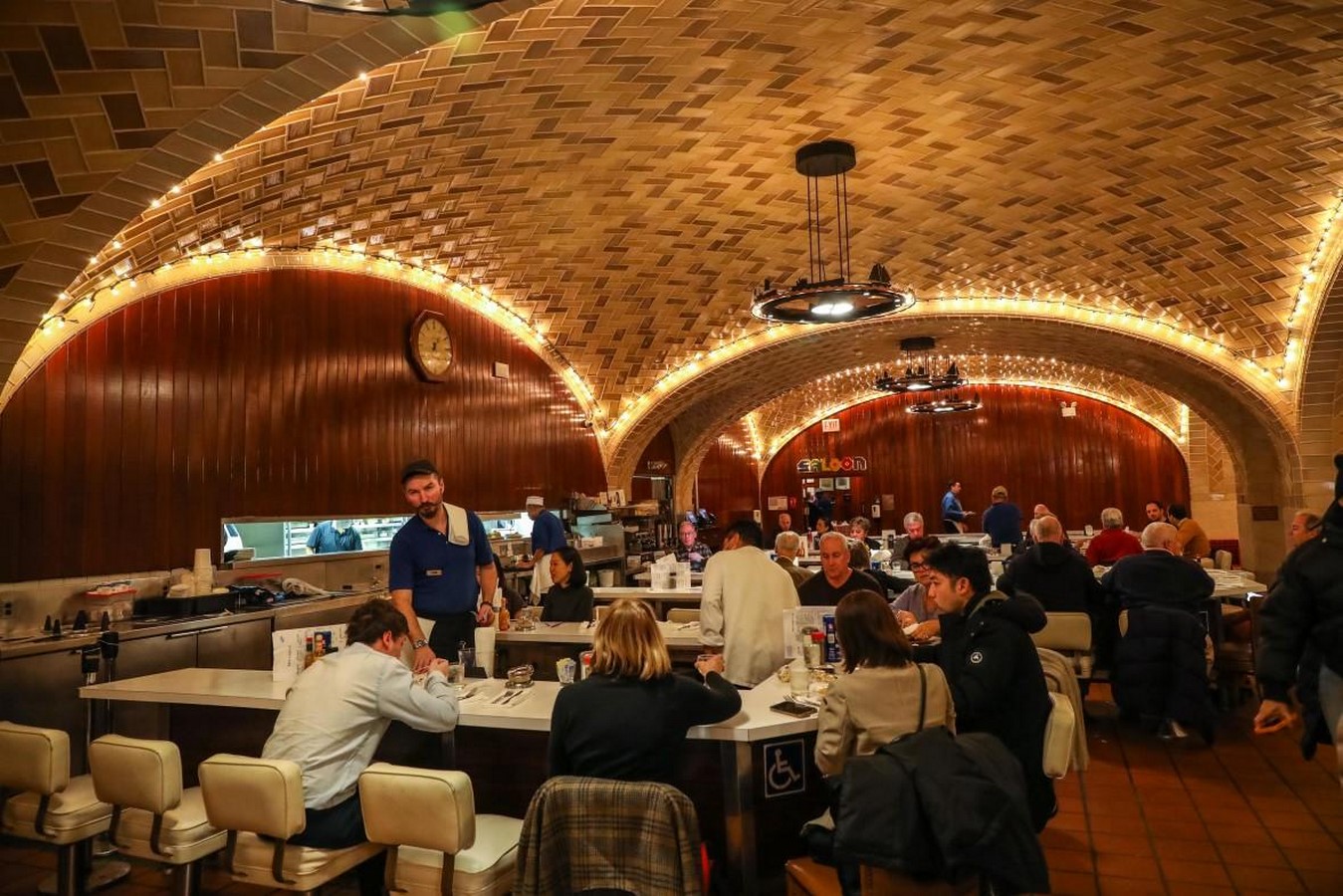
Exquisite Architectural Detailing
The architectural detailing of Grand Central Terminal is a testament to the fusion of opulence and dignity. It showcases a deep understanding of classically inspired forms. Materials such as marble and bronze, crafted with meticulous care, adhere to the Beaux-Arts tradition.
The delicate balance of opulence and dignity is evident throughout the terminal, thanks in part to the likely influence of Whitney Warren, who studied at the Ecole des Beaux-Arts.
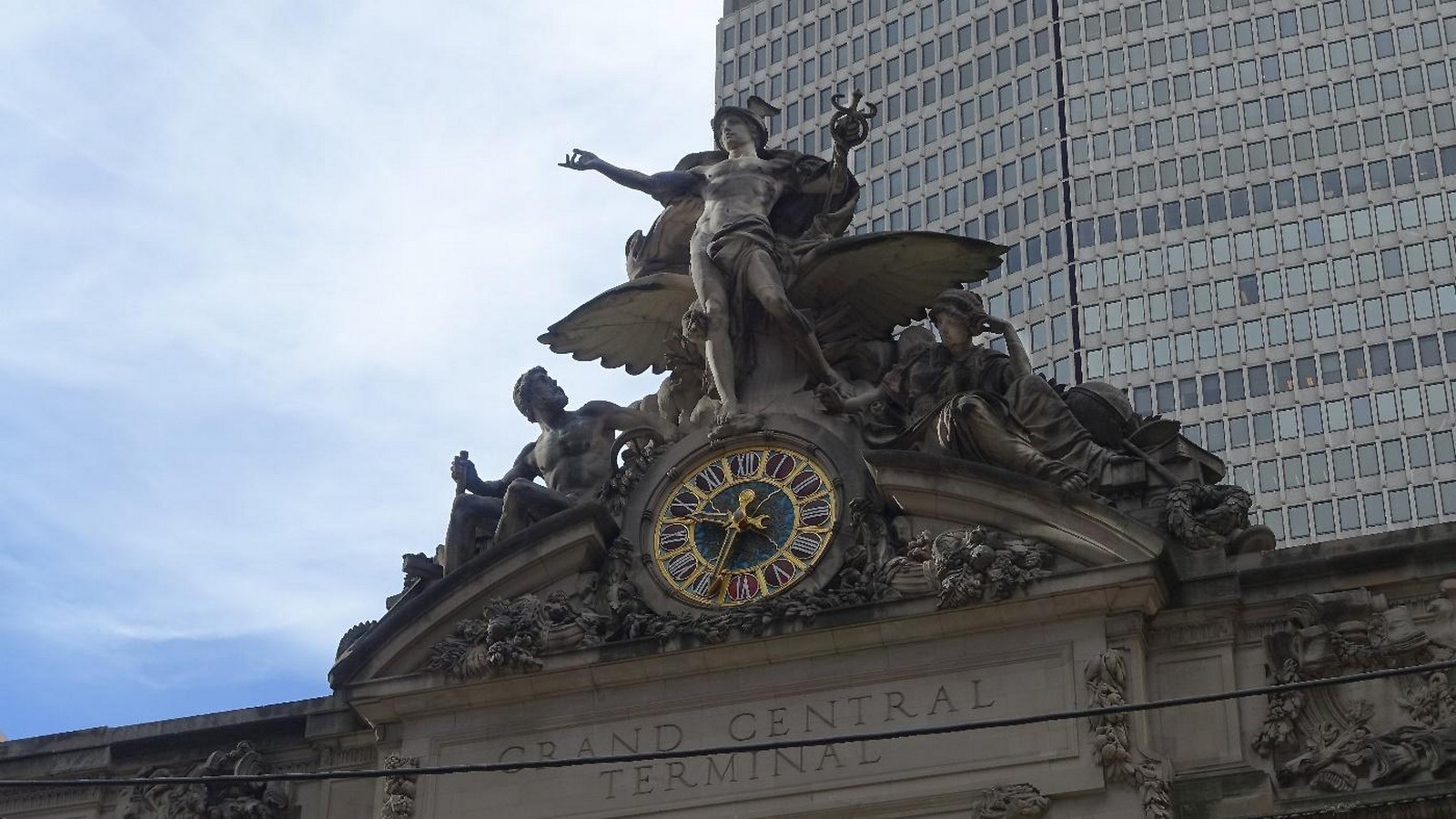
A Hub of Historic Rail Travel
For generations of travellers, arriving at Grand Central Terminal signaled the beginning of exciting journeys on legendary trains like the Yankee Clipper, the Wolverine, the Empire State Express, and the Twentieth Century Limited. These iconic names continue to evoke the romance and excitement of rail travel.
Descending from the Waiting Room along a ramp that bisects the south gallery-like section of the Main Concourse, visitors are treated to a panoramic view of this monumental space. The Main Concourse, a colossal barrel-vaulted hall, soars to a height of 125 feet, stretches 120 feet in breadth and extends 375 feet in length.
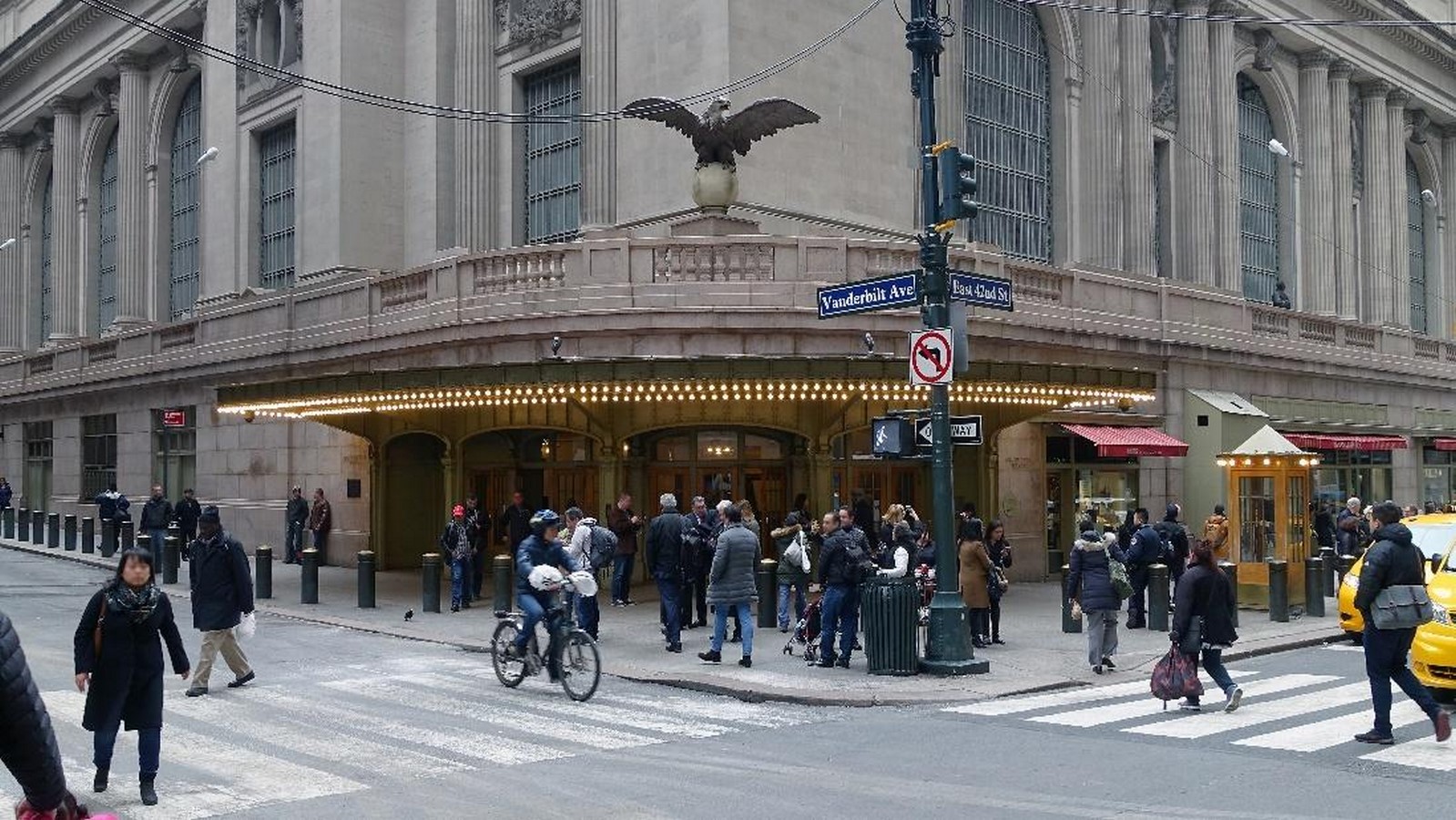
Galleries and Entrances
The north gallery, located above the segmentally arched entrances to the train platforms and the Pan Am Building, offers an ideal vantage point to take in the entire Main Concourse. It features large windows with bronze grilles and square skylights, creating a beautifully illuminated space. Each bay within the gallery boasts a unique cage-like elliptical chandelier, adding to the overall elegance and grandeur.
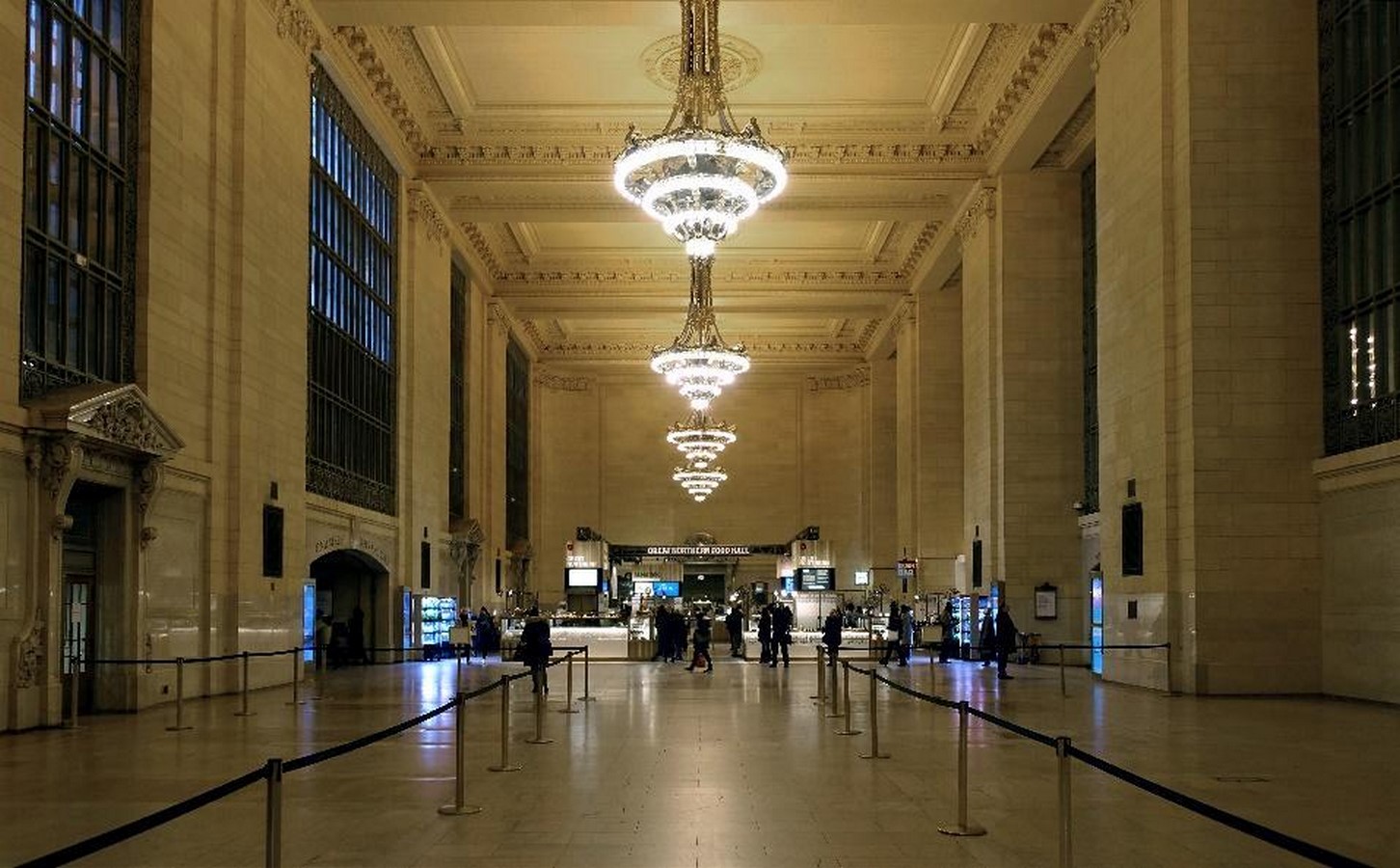
Preservation and Recognition
In 1967, Grand Central Terminal received the well-deserved designation as a New York City Landmark, acknowledging its cultural and architectural significance. However, the journey to preservation was not without challenges.
In 1968, Penn Central, the owners of the Terminal building, initiated negotiations with a developer who sought to lease Grand Central’s air rights and construct an office tower atop the Terminal. The Landmarks Preservation Commission deemed the proposed office tower designs unsuitable and denied the permit applications.
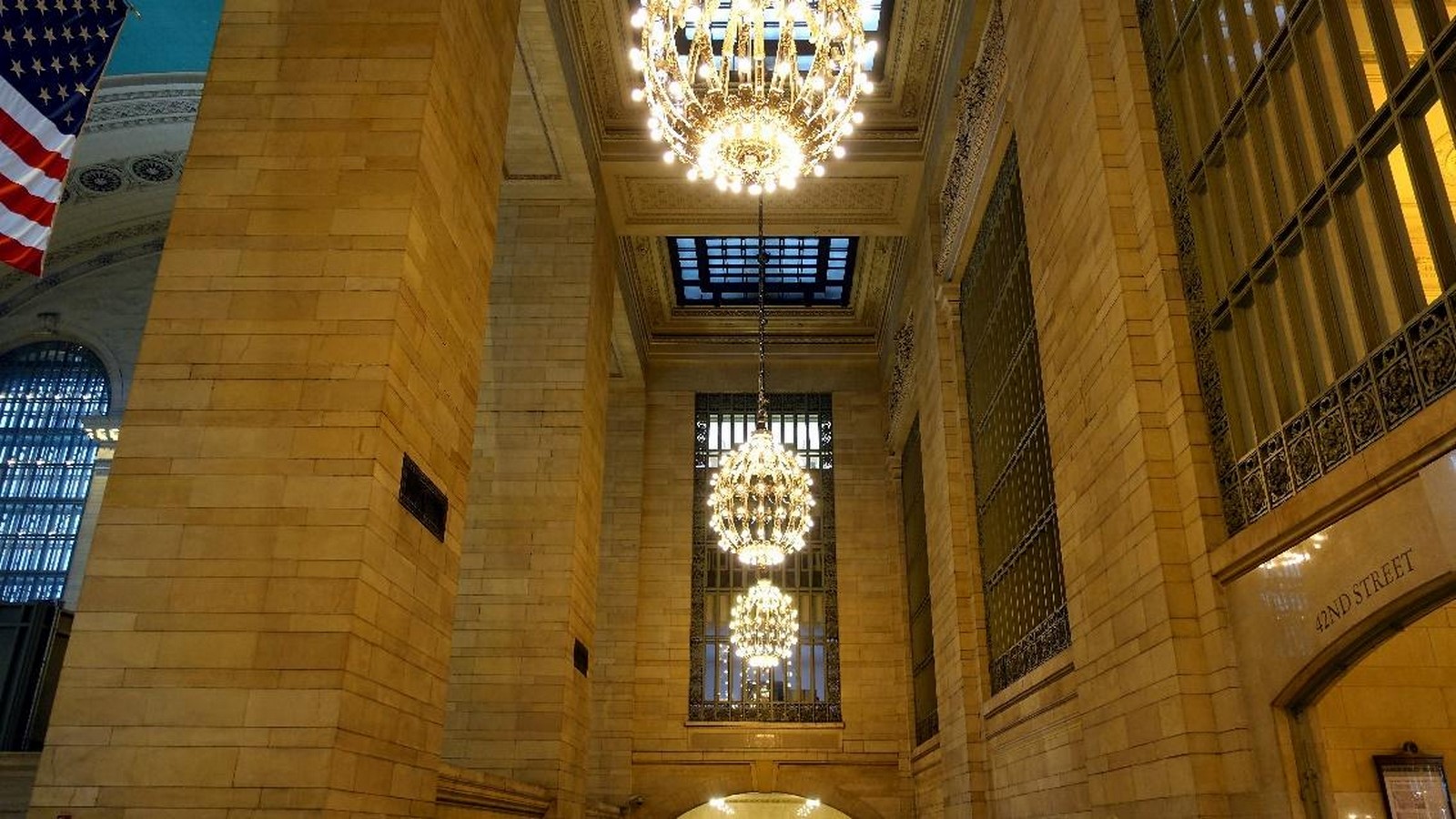
This decision led Penn Central to file a lawsuit challenging the application of the New York City Landmarks law to the Terminal. The legal battle continued until 1978 when the U.S. Supreme Court upheld the Commission’s actions, securing the protection and preservation of Grand Central Terminal’s historic integrity.

Conclusion
To arrive at Grand Central Terminal by train and step into its Main Concourse is an extraordinary introduction to the largest and most cosmopolitan city in America. The immense scale, the richness and beauty of architectural detail and materials, and the impeccable planning of Grand Central’s interiors are unparalleled.
Before the construction of the Grand Central complex, no railroad station in the world had completely fulfilled the needs of travellers. Grand Central, especially its interiors, is one of the city’s most beloved structures, praised for both its aesthetic appeal and the life it brings to midtown.
A survival in the age of planned obsolescence is Grand Central Terminal.
Grand Central Terminal undoubtedly deserves to be considered a landmark because it represents the very essence of Manhattan. It serves as a testimony to human ingenuity, architectural genius, and New York City’s unrelenting energy. This famous building honors the inventiveness of the human spirit, celebrates architectural brilliance, and personifies the resilient spirit of the city.
References:
- Wikipedia. (2020). Grand Central Terminal. [online] Available at: https://en.wikipedia.org/wiki/Grand_Central_Terminal.
- Grand Central Terminal. (2019). Grand Central Terminal. [online] Available at: https://www.grandcentralterminal.com/.
- Grand Central Terminal. (n.d.). About. [online] Available at: https://www.grandcentralterminal.com/about/.
- Nast, C. (2018). Inside the Secret Life of New York’s Grand Central Terminal. [online] Architectural Digest. Available at: https://www.architecturaldigest.com/story/grand-central-terminal-history.
- Roberts, S. (2013). The Birth of Grand Central Terminal. The New York Times. [online] 19 Jan. Available at: https://www.nytimes.com/2013/01/20/nyregion/the-birth-of-grand-central-terminal-100-years-later.html.
- Nast, C. (n.d.). Grand Central Terminal – Landmark Review. [online] Condé Nast Traveler. Available at: https://www.cntraveler.com/activities/new-york/grand-central-terminal.
- www.ascemetsection.org. (n.d.). ASCE Metropolitan Section – Grand Central Terminal. [online] Available at: https://www.ascemetsection.org/committees/history-and-heritage/landmarks/grand-central-terminal.
- www.wikidata.org. (n.d.). Grand Central Terminal. [online] Available at: https://www.wikidata.org/wiki/Q11290 [Accessed 3 Oct. 2023].





















